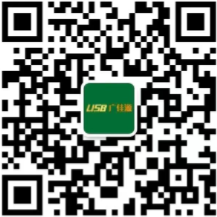 Mr. Chen:136-6225-2835
Mr. Chen:136-6225-2835
 Miss Chen:189-2385-0895
Miss Chen:189-2385-0895
Shenzhen Guangjiayuan Electronic Technology Co., Ltd
Mr. Chen: 136-6225-2835 (same WeChat account)
QQ: 979285705
Miss Chen: 189-2385-0895 (same WeChat account)
QQ: 2391552662
Chen Weiting :135-3824-4786 (same WeChat account)
Chen Weihao: 139-2459-4393 (same WeChat account)
Tel: 86-0755-33182327
Email: gjydz88@163.com
Website: www.usb-type.com
Address: Building 10, Hongxing Gebu Qixiang, Songgang Town, Bao'an District, Shenzhen, Guangdong Province
Apple's recently launched 12 inch MacBook has sparked a wave of controversy because it only has a USB C interface, which can be used for charging or data transmission. The adoption of this interface not only eliminated USB 2.0 for MacBook, but also abandoned Apple's commonly used Thunderbolt interface, and even the Lightning interface used on iOS devices in the future may be replaced by USB c.
Former standard: USB 2.0 and its issues
Today, with the popularization of USB 2.0, it has become commonplace, but at the beginning of the 21st century, 2.0 was a big leap. The peak transfer rate of USB 2.0 can reach 480Mbps, which means that a 60MB file can theoretically be transmitted in one second at the fastest. The transmission speed of USB 2.0 is sufficient for Portable storage device, mobile phone and MP3. The power provided by USB 2.0 makes most external devices do not need external power supply.
Today, the limitations of the 2.0 version of the specification are becoming increasingly apparent. USB 2.0 has encountered the issue of insufficient power, and in an era of GB and TB, the slow speed of 480Mbps is appalling. Professional video editors will no longer use USB 2.0 hardware unless they absolutely have to.
Moreover, USB 2.0 uses a type-a interface that distinguishes between positive and negative, and many users complain that it cannot be inserted correctly when attempting to connect to a device for the first time.
Solution: USB 3.0 and lightning interface
USB 3.0 eventually became the standard interface for most Macs and PCs, bringing a significant speed increase, with a transfer rate of 5Gbps more than 10 times that of the previous generation interface. Although 3.0 is compatible with multiple interfaces, existing Macs and PCs still use type-a interfaces that distinguish between positive and negative.
Apple and Intel jointly developed Thunderbolt, which provides a transmission rate higher than that of USB 3.0. The peak transmission rate of Zeta Pegasi Generation I is 10Gbps, and that of Generation II is 20Gbps. The third generation will be launched at the end of this year, and the speed will reach 40Gbps, that is, 5GB data can be transferred per second.
Thunderbolt not only has ultra-high data transmission rates, but also integrates PCIe, DisplayPort (display interface), and DC power. The shape of the lightning interface is completely consistent with that of the Mini DisplayPort. One interface can connect multiple displays, and in Daisy Chain (similar to series connection) mode, up to six lightning devices can be connected simultaneously.
Some people may think that such a good interface will become popular in the industry like wildfire, but in fact, the Thunderbolt interface is mainly used for Apple computers, and there are not many Thunderbolt peripheral devices.
Next generation: USB C
USB type-c, also known as USB c, solves all of the above problems at once. The USB C interface is very small and supports forward and reverse insertion, providing a high-speed transmission solution for lightweight devices.
Although USB C is backwards compatible, this interface is designed for USB 3.1. The speed of 3.1 will double from 5Gbps in version 3.0 to 10Gbps, which will enable USB C to carry lightning interface tasks, such as connecting a 4K or 2K monitor.
Due to its ability to provide 100W of power in each transmission direction, USB C has also replaced MagSafe as the charging interface for the 12 inch MacBook.
Thunderbolt includes the DisplayPort function, which connects a bidirectional 20Mbps channel to the display. USB C supports a type of alternating mode called DisplayPort, which allows DisplayPort signals to be transmitted through one, two, or if necessary four channels. However, when all four channels are utilized, USB 3.1 will decrease to 2.0.
However, USB C does not yet support Dual Mode DisplayPort and passive DisplayPort converters.
The key is that future computers may use USB C as the only interface standard and gradually abandon independent HDMI, DVI, or Ethernet interfaces.
The decisive factor in becoming a universal standard
The core competitiveness of USB C is its universality, just like its name "Universal Serial Bus". It is not only directly backwards compatible with 3.0 and 2.0, but also can connect to traditional Type-A interfaces through converters. Most importantly, it will receive strong support from the industry.
Thunderbolt Technology once wanted to be a troublemaker in the industry, but unfortunately USB is everywhere. The obstacle to the popularization of USB-C only comes from the cost of equipment manufacturers, but as OEM manufacturers join, the cost will decrease, and this obstacle will gradually decrease.
Lightning technology will not completely disappear, at least not overnight. Some professionals require a transmission speed of 20 or even 40Gbps, and USB cannot natively support RAID (disk array) and TRIM (for example, using USB group RAID requires a controller), which are the key to building complex storage devices. However, for ordinary users, lightning technology is no longer a selling point, and as can be seen from the new MacBook, Apple itself has realized.
It is worth considering whether USB-C will eventually replace Lightning? Lightning adopts USB 2.0, which is also compact and reversible, and these can be easily replaced by USB C.
If Apple switches to USB C on mobile devices, there are also many issues, such as the verification chip inside the Lightning plug being used to identify and block unauthorized wires and devices. Abandoning Lightning will damage Apple's accessory business or at least weaken Apple's control over the accessory ecosystem. And many iPhone and iPad users do not want to see the peripheral accessories they purchase become outdated again.
The most likely thing Apple will do is upgrade Lightning and add support for USB 3.0 and 3.1, but for Mac, USB c is destined to be widely used, and there may be more and more Macs no longer equipped with Thunderbolt interfaces in the future.
Contact person:
Mr. Chen 136-6225-2835 (same WeChat account)
Miss Chen 189-2385-0895 (same WeChat account)
Chen Weiting 135-3824-4786 (same WeChat account)
Chen Weihao 139-2459-4393 (same WeChat account)
Address:
Building 10, Hongxing Gebu Qixiang, Songgang Town, Bao'an District, Shenzhen, Guangdong Province
 |
 |
| Technology 1 | Technology 2 |